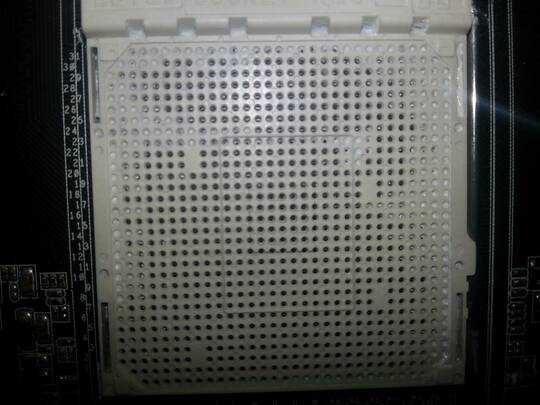7
A client of mine brought in a computer he wanted to get cleaned up, OS reinstall, and had a video card in hand he wanted me to install... no big deal.
So I open up the case and see this...

Wow, right?
I've got most of it cleaned up, its looking great. The only problem area is inside the pin holes on the CPU socket.

I have a risky theory that this thermal paste is non-conductive, which would explain how he went all this time without an incident. Assuming this is true, it shouldn't necessarily matter that a little bit is still in the socket right?
Also, the thermal paste was in fact inside the socket when I first removed the processor.
Thanks for your time!!
6If the system has been running fine, and you cleaned up all the excess thermal paste, it should be fine. Reseat the CPU, make sure the system boots, do a memory test for good measure (if the CPU is having an issue, the memory test will trigger it because the memtest also exercises the CPU), if it works you're lucky and you can return it to the customer. If not, you should tell the customer about the little problem they created by using way, way too much thermal paste. – allquixotic – 2014-01-31T15:17:34.523
1Although its not conductive it doesnt mean its good for the CPU or cannot cause other problems. How does somebody even do this? I assume there was also paste on the CPU itself? Because the paste in the socket is doing nothing effective. The paste really should be cleaned up. I agree though if it works its not a huge problem. – Ramhound – 2014-01-31T15:20:15.877
1@allquixotic You best make that an answer. – Tonny – 2014-01-31T15:58:45.980
If some is good, more is better? Just WOW! Arctic Silver might have some conductivity, but this is Zinc Oxide. Zinc.org lists it as an n-type semiconductor. They also say that single crystals of the stuff can be used as detectors in crystal sets. – Fiasco Labs – 2014-01-31T16:56:55.260
@FiascoLabs AS5 is listed as non-conductive by the manufacturer. Most of the hobbyist stuff is non-conductive, I believe. – Bob – 2014-02-03T12:54:36.837
For the most part, it should be non-conductive as it's a finely ground powder in a liquefactant that's probably an emulsion if the old tube that had separated is an indicator. Oils would render the semiconductor properties less than semi at MB voltages. Plus there's a lacquer layer on top of the traces. Excepting what's in the socket interfering with contact, if the board's working, run it till it dies. In the health industry, it would be called a preexisting condition and therefore something for advisement, but not your responsibility. – Fiasco Labs – 2014-02-03T16:42:31.233